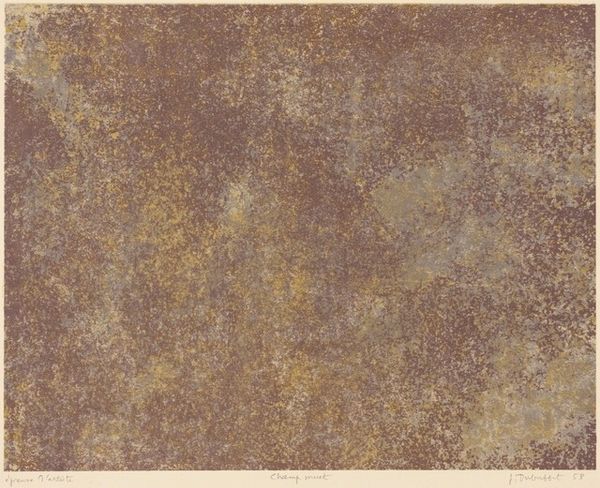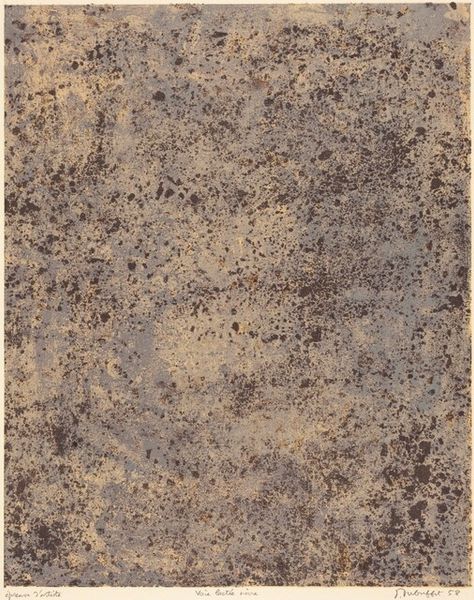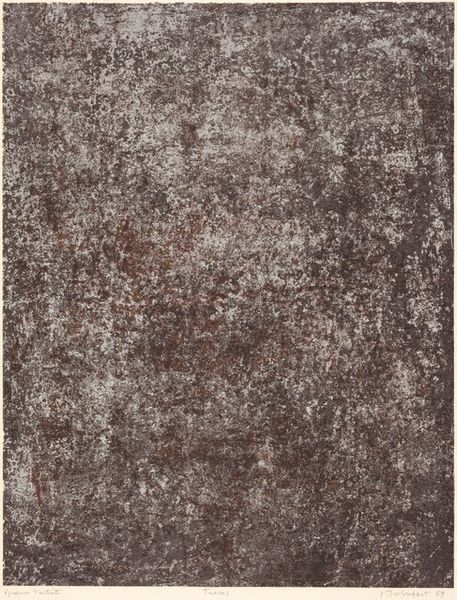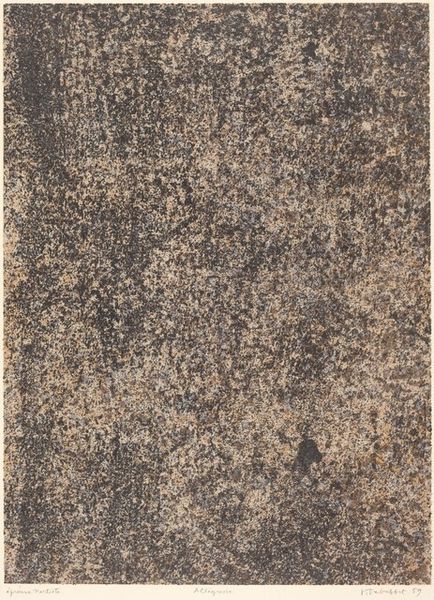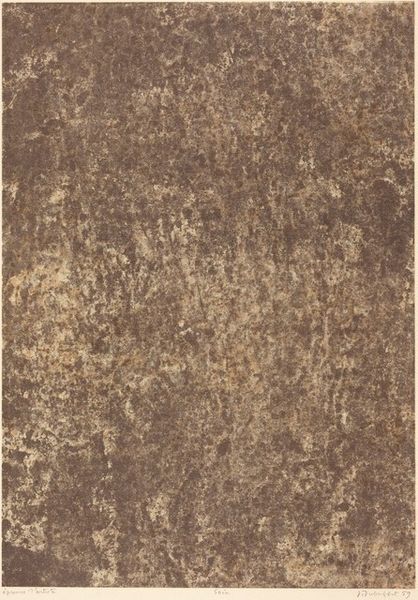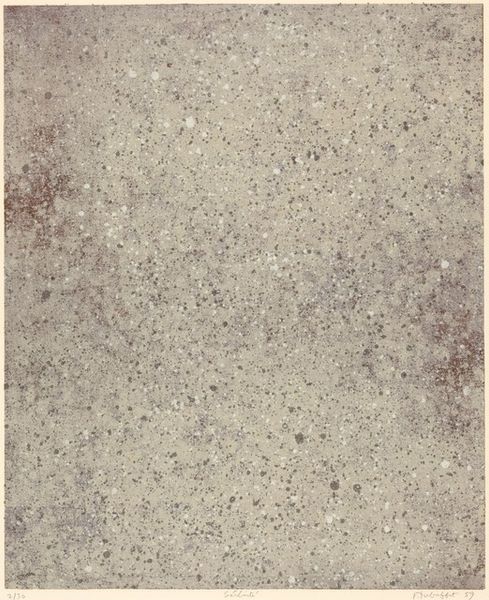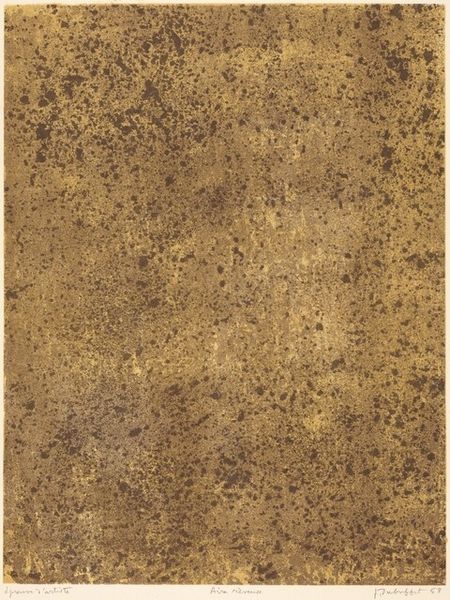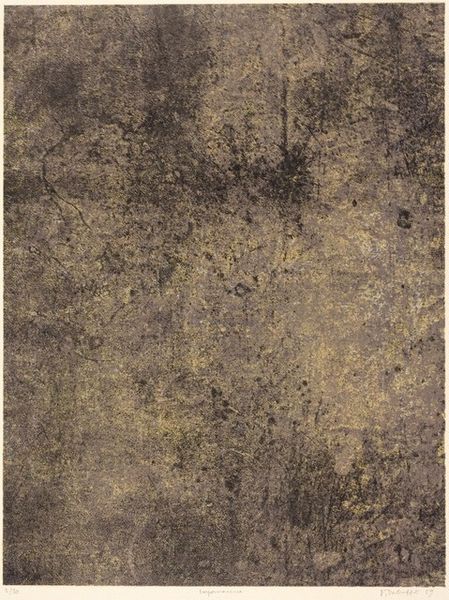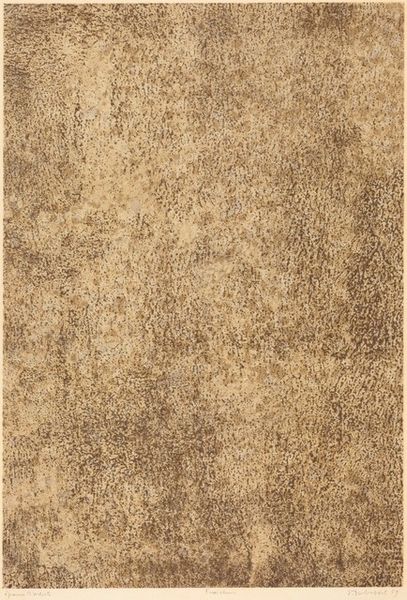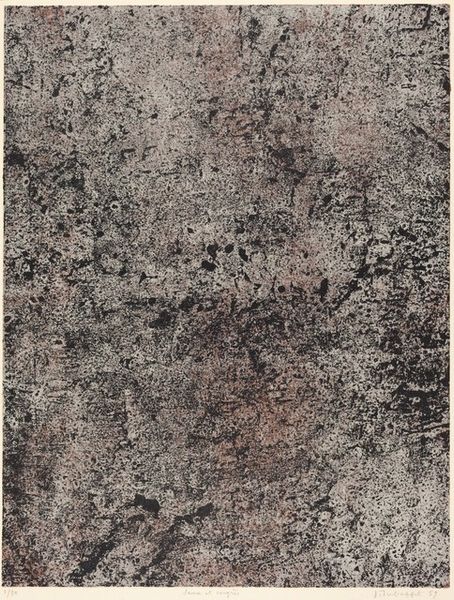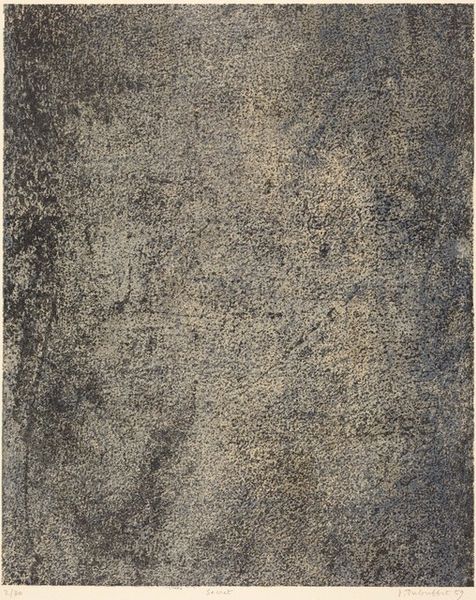
matter-painting, print, frottage
#
abstract-expressionism
#
matter-painting
#
non-objective-art
# print
#
frottage
Copyright: National Gallery of Art: CC0 1.0
Editor: This is "Faste," a 1959 matter painting and frottage print by Jean Dubuffet. The earthy tones and mottled texture give it a kind of primordial feel. What formal elements stand out to you? Curator: Immediately, the texture seizes my attention. Notice how Dubuffet has activated the entire surface. It’s a uniform field of incident, without a hierarchical focal point. The monochromatic palette, primarily consisting of ochre and brown, flattens the image, emphasizing its objecthood rather than illusionistic depth. Editor: It’s almost aggressively flat, isn’t it? There’s no recession into space whatsoever. But the texture is so detailed that it's kind of mesmerizing, keeping your eye moving across the plane. Curator: Precisely. This interplay between flatness and intricate surface detail is key. The technique, frottage, translates to "rubbing," and you can imagine how the artist transferred textures directly from found surfaces to the printing plate. Do you observe how this strategy might function to challenge conventional notions of artistic skill and originality? Editor: It democratizes the process somehow. The texture is already "out there," ready to be discovered and replicated. He's acting almost like a medium, channeling the material world. Curator: Yes, you are grasping it well. Rather than masterful invention, he emphasizes selection and transference. What do you believe this foregrounding of the material plane accomplishes aesthetically? Editor: It shifts our attention away from the representational, making us intensely aware of the print itself as an object, almost sculptural in its surface complexity. I see his printmaking departing radically from traditional approaches. Curator: Indeed, we can observe a clear break. And thinking critically about such formal qualities truly enables one to begin appreciating the artwork, even absent any obvious cultural or historical referents. Editor: Analyzing texture and composition has really deepened my appreciation for Dubuffet's artistic statement, as he challenges traditional boundaries.
Comments
No comments
Be the first to comment and join the conversation on the ultimate creative platform.

